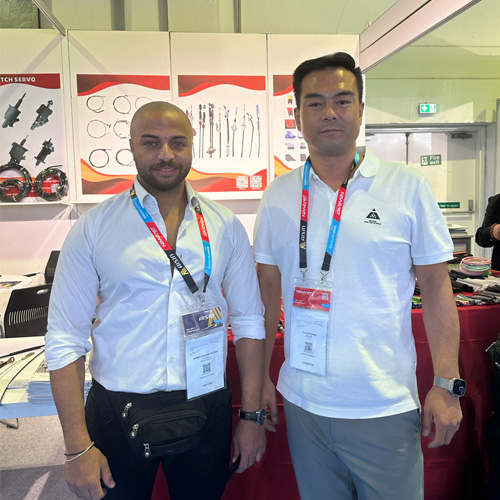carburetor cable
Understanding Carburetor Cables Function, Maintenance, and Importance
The carburetor is a crucial component of many internal combustion engines, responsible for mixing air and fuel in the right proportions for combustion. Central to the effective operation of a carburetor is the carburetor cable, a component that plays a key role in regulating the air-fuel mixture and throttle position. This article will delve into the importance of carburetor cables, how they function, and best maintenance practices to ensure optimal performance.
What is a Carburetor Cable?
A carburetor cable is a flexible wire or cable assembly that connects the throttle lever of the carburetor to the throttle pedal or lever inside a vehicle. When the driver presses down on the accelerator pedal, the throttle cable pulls the throttle lever, opening the carburetor and allowing more air and fuel mixture into the engine. This action accelerates the engine and increases power output. Hence, the carburetor cable is essential for smooth acceleration and overall engine performance.
How Does a Carburetor Cable Work?
The operation of a carburetor cable is relatively simple but effective. The cable typically consists of a metal cable housed inside a protective sheath. The sheath ensures that the cable can move freely without excessive wear from friction. When the driver accelerates, the pedal’s movement is transmitted through the cable, which then pulls the throttle lever on the carburetor.
The length and tension of the cable are crucial; if it’s too loose, the throttle may not open fully, which can lead to sluggish acceleration and reduced engine performance. Conversely, if the cable is too tight, it could cause the throttle to stick, resulting in overly aggressive acceleration or difficult deceleration.
Signs of a Failing Carburetor Cable
Over time, carburetor cables can wear out or become damaged, leading to various engine performance issues
. Some common signs of a failing carburetor cable include1. Sticking Throttle If the throttle does not return to its neutral position when the accelerator pedal is released, this may indicate a frayed or damaged cable.
2. Inconsistent Acceleration If the vehicle hesitates or has erratic acceleration, it may be due to cable slack or binding.
carburetor cable

3. Difficulty in Pedal Response A delayed response when pressing the accelerator can signify that the cable is worn or improperly adjusted.
4. Visible Damage Inspecting the cable for frays, rust, or bends can give a clear indication of its condition.
Maintenance of Carburetor Cables
To maintain the performance of your vehicle, regular inspection and maintenance of the carburetor cable are essential. Here are some tips
- Routine Checks Periodically check your carburetor cable for signs of wear and damage. Look for fraying, corrosion, or any obstructions that may hinder its movement.
- Lubrication Applying a light lubricant can reduce friction and extend the cable's life. Be cautious to use only the recommended lubricant, as some oils can degrade the cable’s materials.
- Adjusting Cable Tension Ensure that the cable is neither too tight nor too loose. An improperly adjusted cable can lead to poor engine performance or even potential damage.
- Replacement If the cable shows significant wear or damage, it’s advisable to replace it immediately. A new carburetor cable can enhance your vehicle's responsiveness and efficiency.
Conclusion
The carburetor cable may seem like a small component in the grand scheme of engine mechanics, but its role in vehicle operation is undeniably significant. By understanding how it functions, recognizing the signs of failure, and performing regular maintenance, vehicle owners can ensure that their engines run smoothly and efficiently. Investing time and care into this often-overlooked component can lead to a more reliable and enjoyable driving experience. Regular upkeep of the carburetor cable contributes not only to the longevity of the engine but also maximizes performance, making it a critical element in vehicular maintenance.
-
Workings of Clutch Pipe and Hose SystemsNewsJun.04,2025
-
The Inner Workings of Hand Brake Cable SystemsNewsJun.04,2025
-
The Secrets of Throttle and Accelerator CablesNewsJun.04,2025
-
The Hidden Lifeline of Your Transmission Gear Shift CablesNewsJun.04,2025
-
Demystifying Gear Cables and Shift LinkagesNewsJun.04,2025
-
Decoding Clutch Line Systems A Comprehensive GuideNewsJun.04,2025
